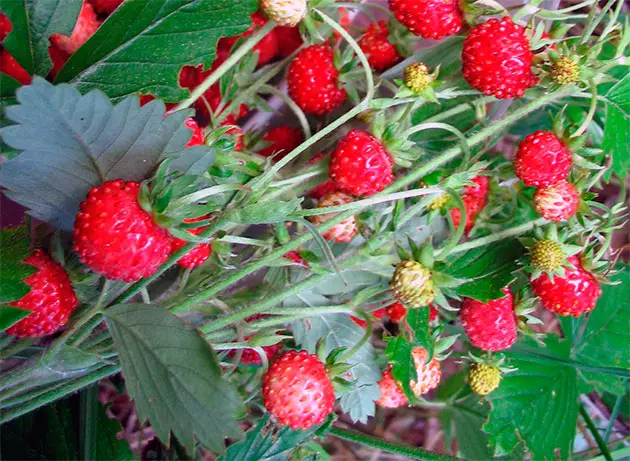
Where can you find different varieties of strawberries? We suggest using one of the methods for propagating this berry.
Strawberries are delicious and incredibly nutritious. Of course, you can always buy seedlings, and anyone can plant the variety they like best. But how do you do it?
Many types of strawberries produce runners with rosettes during the growing season. By transplanting these to a permanent location, you can establish new plantings. The characteristics of the variety remain intact. This method is simple and accessible to everyone.
You can also propagate strawberries from seeds of any variety or hybrid. Here’s how: take the berries you like and lay them out on a plate at home to fully ripen. There’s a little “secret” here. For planting, you should take seeds from the part of the berry near the calyx. This is where plants with larger fruits will develop. Once the selected berries are ripe, cut off their tops and place them in a cup. When a jelly-like mass forms, rinse it three times. The most viable seeds will settle at the bottom of the cup. Spread them out on a cloth to dry in the sun, then transfer them to paper bags for storage. The ideal temperature for this is around 54°F (12°C).
You can also prepare seeds this way: carefully slice off the top layer of the berry and place it on paper. Dry it in the sun for a week. Sow the strawberries in early winter. Disinfect the seeds by moistening the soil after sowing with a pink solution of potassium permanganate.
To grow seedlings, take a shallow box. For drainage, add a layer of peat or leaf soil at the bottom. Then fill the box halfway with turf soil, adding a quarter of sand, and mix everything together. Plant the seeds shallowly, pressing the soil down.
Cover them with a thin layer of sand. On top, place a sheet of thick paper, and then add a layer of fine peat.
Leave the box outside, covered with snow. It should stay there until the end of February or early March. After that, bring it into a greenhouse, hotbed, or room. Remove the paper and peat. Water the seeds and cover them with glass to prevent moisture from evaporating.
In about three weeks, you’ll see sprouts. Once true leaves form, thin the seedlings to a distance of 0.8 inches (2 cm). When the leaves touch, transplant them again, maintaining a distance of 1.6 inches (4 cm) between plants.
By the end of May, you can transplant the strawberries to a nursery in a special bed. Here, the distance between plants should be 4 inches (10 cm).
You need to weed, aerate the soil, and keep it moist. On days 6-10, feed the strawberries with a solution of mineral fertilizers (about 0.9 oz (25 g) of berry mix in bags per 2.6 gallons (10 liters) of water). Additionally, 10 days after the first feeding, apply micronutrients 1-2 times (1 mg per 2.6 gallons (10 liters) of water).
Plants in the nursery will quickly produce runners with rosettes. To help them root better, cover them with soil. By the end of July, you can transplant the strawberries from the nursery to their permanent location. At this time, feed them with potassium chloride, superphosphate, and nitrate. Just keep in mind that not all plants grown from seeds will produce berries that you love. During the fruiting season, by tasting the berries from each bush, you’ll be able to select the ones you want.
